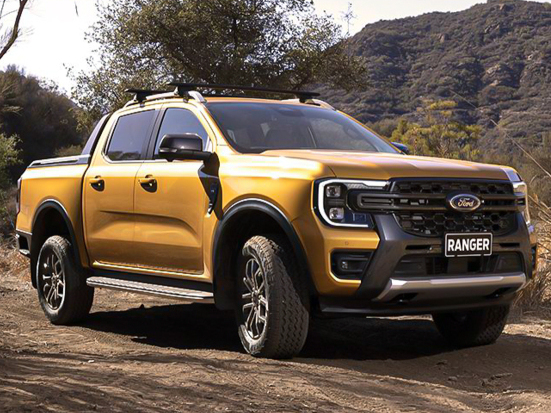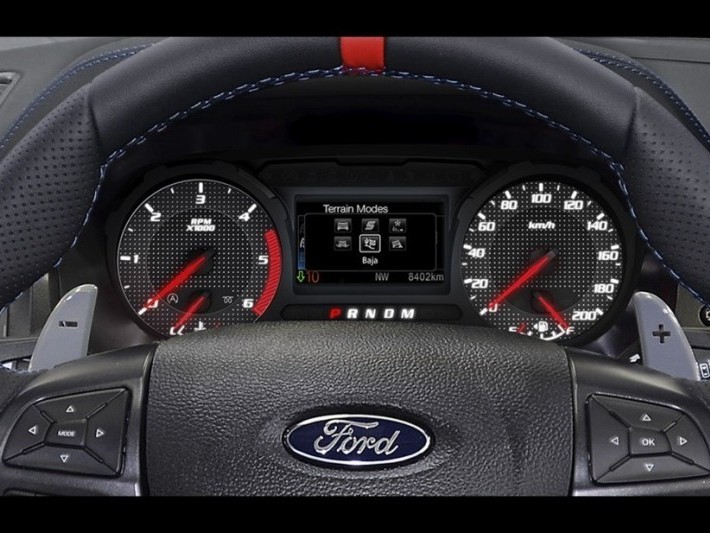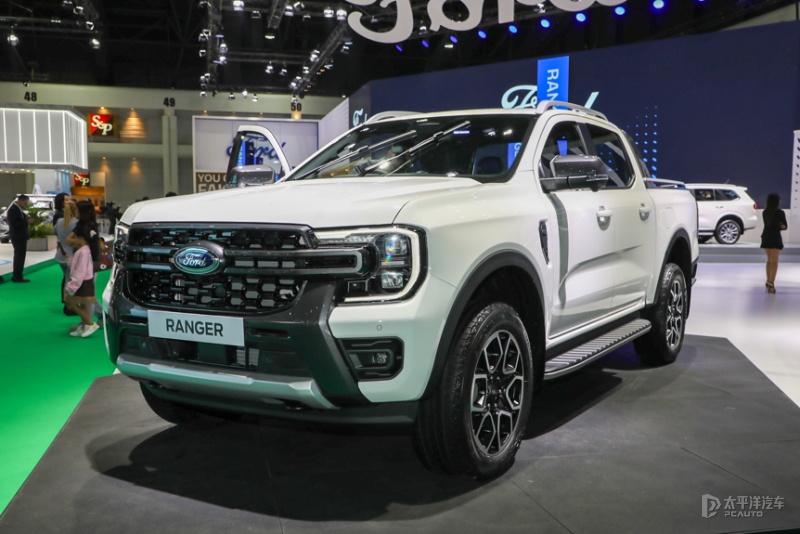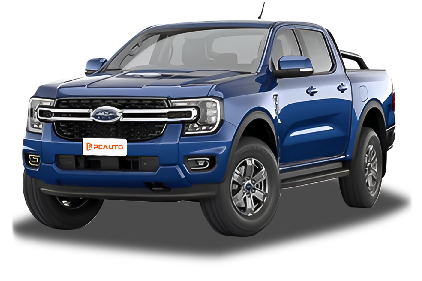Q
How long will my 2020 Ford Ranger last?
A 2020 Ford Ranger, when used normally and serviced regularly, can typically last 200,000 to 300,000 kilometers or even longer. Its actual lifespan depends on driving habits, road conditions, and how often you get it serviced. The diesel engines in this truck are known for durability, especially the 3.2-liter five-cylinder and 2.0-liter bi-turbo versions. Keep up with oil changes, filter replacements, and timing belt services, and the engine should stay pretty reliable.
In terms of body structure, the Ranger uses high-strength steel and rust-proofing, which helps slow down corrosion even in our local humid climate. Still, it’s a good idea to wash the undercarriage regularly, especially after driving in the rainy season or near the coast. The transmission and 4WD system also need regular fluid checks—try not to overdo it with off-roading or heavy loads. If you notice strange noises, reduced power, or a sudden jump in fuel consumption, get it checked out right away. Letting those small issues slide can lead to bigger, costlier problems down the line.
The key to making your Ranger last is sticking strictly to the maintenance schedule in the owner’s manual and using OEM or certified parts. Also, avoid keeping it under heavy load for long stretches. Electronic system stability matters for long-term use too—update the infotainment software periodically and keep an eye on the battery health. All in all, the Ranger holds up well against other pickups in its class; plenty of owners are still running theirs smoothly even after 10 years on the road.
Special Disclaimer: This content is published by users and does not represent the views or position of PCauto.
Related Q&A
Q
What kind of transmission does a 2020 Ford Ranger have?
The 2020 Ford Ranger offers two transmission choices: a 6-speed automatic and a 6-speed manual, with specific availability depending on the trim level and powertrain. The Wildtrak trim, which comes with the 2.0-liter bi-turbo diesel engine, comes standard with the 6-speed automatic, while some entry-level models might get the 6-speed manual to suit different driving preferences. The automatic transmission uses electronically controlled shifting, which optimizes fuel efficiency and smoothness—perfect for city commuting and long highway drives. On the other hand, the manual gearbox is better for drivers who crave that hands-on feel, delivering more direct power delivery and driving engagement. Both transmissions are finely tuned to match the Ranger's off-road capabilities, handling everything from daily errands to rough terrain with ease. They stand out for their durability and reliability in the segment, and regular maintenance will keep them running strong for the long haul. If you're often towing heavy loads or hitting the trails, the automatic's convenience might be more your style, but the manual brings that extra level of driver involvement. Understanding how each transmission performs can help you pick the setup that best fits your driving habits and get the most out of your Ranger.
Q
What are the cons of the 2020 Ford Ranger?
The 2020 Ford Ranger is a solid-performing pickup, but there are a few drawbacks worth noting. First off, fuel economy is just so-so, especially with the 2.0L twin-turbo diesel engine – it guzzles more gas around town, which could hike up running costs for folks who do a lot of highway driving. Then there's the rear seat space, which feels pretty tight, especially legroom-wise; taller passengers might find it cramped, making long drives less comfy. Inside, the cabin uses a lot of hard plastics on the center console and door panels, so the overall feel isn't as premium as some competitors in its class. Tech-wise, the base trim's infotainment system is pretty basic – you don't get Apple CarPlay or Android Auto, those mainstream connectivity features, unless you step up to a higher trim. At highway speeds, wind and road noise can get noticeable too. And being a pickup, it's got leaf springs in the rear suspension, which means the back seat ride can feel bumpy when the truck's empty. That said, the Ranger still shines when it comes to off-roading and hauling. Its smart 4WD system and multiple drive modes handle tough terrain well, and the bed can carry a decent load. For buyers needing a truck that works hard during the week and can hit the trails on weekends, it's still a solid pick – just something to weigh up before signing on the dotted line.
Q
What is the powertrain warranty on a 2020 Ford Ranger?
The 2020 Ford Ranger typically comes with a powertrain warranty of 5 years or 160,000 kilometers, whichever comes first. This warranty covers core components like the engine, transmission, and drivetrain, giving owners peace of mind for the long haul. The powertrain warranty is a key part of a vehicle's coverage and usually lasts longer than the basic warranty, showing the manufacturer's confidence in these critical parts. While different brands might define "powertrain" slightly differently, it generally includes major components such as the engine, transmission, driveshaft, and differential. Beyond the factory warranty, owners can opt for extended warranty plans for extra protection—especially handy if you regularly do heavy off-roading or hauling. Sticking to regular maintenance at authorized service centers is a must to keep the warranty valid; using non-genuine parts or skipping required servicing could void it. Knowing your vehicle's warranty coverage helps you file claims promptly when issues pop up, saving you from unexpected repair bills. And it's a good idea to keep all your service records as proof, just in case.
Q
Does the 2020 Ford Ranger have any problems?
The 2020 Ford Ranger is generally a reliable pickup, but some owners have reported common issues during use. For example, the transmission occasionally has a jerky feel at low speeds, which might be due to its tuning leaning towards fuel efficiency. Additionally, some owners have mentioned that electronic systems like the infotainment screen can sometimes lag or freeze; these problems can usually be fixed with a software update. In terms of power, the 2.0-liter bi-turbo diesel engine performs strongly, but regular maintenance is recommended to ensure its long-term stability, especially timely replacement of the diesel filter. The body structure and chassis excel in harsh road conditions, but it's advisable to regularly inspect the suspension components, as pickup trucks often carry heavy loads or are used for off-roading, which can accelerate component wear. It's worth mentioning that this vehicle has great modification potential, with many upgrade accessories available on the market for off-road or cargo needs, but it's recommended to choose professional manufacturers for modifications to ensure it doesn't affect the original vehicle warranty and safety. Overall, as long as regular maintenance is carried out according to the manufacturer's recommendations, this vehicle can provide good durability and practicality, suitable for consumers who need to balance daily use and work needs.
Q
What is the recall on Ford trucks 2020?
The 2020 Ford truck recalls, covering models like the F-150 and Super Duty lineup, primarily address potential safety concerns. These include issues where some vehicles' driveshafts might fracture due to improper heat treatment, leading to a loss of power transmission. Additionally, certain trucks could experience delayed or failed rearview camera displays caused by wiring problems, which poses a risk during reversing maneuvers. To tackle these problems, Ford is offering free replacements of upgraded components or software updates through its dealerships for affected vehicles. If you're an owner suspecting your truck might be part of the recall, you can verify by checking your Vehicle Identification Number (VIN) on Ford's official website or by visiting an authorized service center. It's important to note that vehicle recalls are a standard practice for manufacturers to proactively resolve potential defects, not an indication of poor quality. In fact, they demonstrate a brand's commitment to safety. During daily driving, regularly inspecting your vehicle's condition and promptly responding to recall notices can effectively reduce risks. It's also advisable to get in the habit of subscribing to recall alerts through official channels to ensure you receive the latest information as soon as it's available.
Q
What type of transmission does a 2020 Ford Ranger have?
The 2020 Ford Ranger offers two transmission options: a 6-speed automatic and a 6-speed manual. The specific configuration depends on the trim level and powertrain, with the automatic version being more common. This automatic gearbox is widely praised for its smooth shifts and reliability, making it a solid choice for daily driving and light off-roading. The Ranger's automatic transmission uses advanced shift logic that adjusts shift points based on driving conditions, boosting fuel economy and enhancing the overall driving experience. On the other hand, the manual transmission caters more to drivers who crave that hands-on, engaging feel. As a core component of the vehicle, the transmission directly impacts driving dynamics and fuel efficiency. Regular maintenance and transmission fluid changes are key to extending its lifespan, so it's best to follow the manufacturer's recommended service intervals. For users who frequently go off-roading or haul heavy loads, opting for a trim with a more robust, reinforced transmission is a smart move to ensure long-term durability.
Q
What is the transmission problem on the 2020 Ford F-150?
The 2020 Ford F-150 has had some reported transmission issues, mainly with the 10-speed automatic (10R80). Some owners have noted rough shifting or delays at low speeds, especially noticeable during cold starts or frequent acceleration/deceleration. Additionally, there are a few cases mentioning potential abnormal noises from the transmission under specific operating conditions. These problems can usually be improved through software updates or resetting the transmission's adaptive learning program; if there's hardware damage, relevant components may need replacement. Ford has issued Technical Service Bulletins (TSBs) addressing these issues, advising owners to perform regular maintenance and promptly visit authorized service centers for inspections. Transmission technology has advanced rapidly in recent years; 10-speed transmissions improve fuel economy and smoothness through closer gear ratios, but their complex design demands higher manufacturing precision and maintenance standards. In daily driving, avoiding sudden acceleration/deceleration and regularly changing the specified transmission fluid can effectively extend its lifespan. If you encounter similar problems, prioritizing connecting professional diagnostic equipment to read trouble codes will help quickly identify the cause.
Q
What is the Ford engine recall in 2020?
The 2020 Ford engine recall affects certain models worldwide equipped with the 1.5-liter EcoBoost engine. The main issue is that coolant may leak into the cylinders, causing the engine to overheat or stall, posing a safety risk. Affected vehicles include SUV models like the KUGA (the overseas version of the Escape). Ford is offering free inspection and repair services, including replacing core components such as the cylinder block to ensure the cooling system's seal performance. This type of recall is a regular part of automakers' proactive problem-checking processes, reflecting a responsible attitude towards consumers. For car owners, if the dashboard indicates an engine fault or abnormal coolant loss, they should promptly contact an authorized service center for inspection. In fact, engine cooling system failures are one of the common issues in the automotive industry. Regularly checking coolant levels and hose seal performance helps prevent such situations. Different brands and models may also have similar technical risks due to design differences, so developing good regular maintenance habits is very important.
Q
What is the transmission problem on the 2020 Ford Super Duty?
The transmission issues with the 2020 Ford Super Duty primarily center around the 10-speed automatic transmission (10R140). Some owners have reported rough shifting, delayed upshifting or downshifting, and jerking during low-speed driving. These problems may be related to transmission software calibration or the hydraulic control system. Ford has issued a technical bulletin advising dealers to update the Transmission Control Module (TCM) program to optimize shift logic. Additionally, a small number of cases mention that a faulty transmission oil temperature sensor causes the warning light to illuminate. Such issues typically require inspecting the sensor wiring or replacing the component. For heavy-duty pickup trucks, transmission durability is crucial. In daily use, it is advisable to avoid frequent rapid acceleration or overloading, check the transmission fluid condition and level during regular maintenance, and promptly visit an authorized service center for diagnosis if abnormal noises or shifting problems are noticed. Modern transmission technology is complex; software updates are often the preferred solution for electronic issues, while mechanical components require professional equipment for testing. Maintaining good driving habits can significantly extend the transmission's lifespan.
Q
How long is the warranty on a 2020 Ford Ranger?
The 2020 Ford Ranger comes with a factory warranty of 3 years or 100,000 kilometers, whichever comes first. This warranty covers the vehicle's major mechanical components and electronic systems, providing owners with basic quality assurance. It's worth noting that some wear - and - tear parts like brake pads, windshield wipers, and tires are usually not covered. For specific details, it's advisable to refer to the warranty manual provided at the time of purchase. In addition to the factory warranty, many dealers offer extended warranty service options, and owners can choose to purchase them according to their own needs to further extend the coverage period. During the warranty period, it's crucial to have regular maintenance at authorized service centers; otherwise, it may affect the warranty rights. For pickup trucks that are often used for hauling or off - road driving, it's recommended that owners carefully read the instructions on usage conditions in the warranty terms, as some extreme usage scenarios may invalidate the warranty. Understanding these details can help owners better protect their rights and keep the vehicle in optimal condition.
Latest Q&A
Q
How much is a 2018 D-Max?
The used car prices for the 2018 D-Max vary depending on factors like condition, mileage, trim level, and location. Current market rates are roughly between RM60,000 and RM90,000. Low-mileage, well-maintained high-spec models might edge closer to the upper end, while base trims or higher-mileage examples will be more affordable. This pickup comes with a 3.0T diesel engine, delivering reliable performance and strong off-road capabilities – perfect for users needing to balance cargo hauling with daily driving. Its modification potential is also a hit with enthusiasts. When buying, it's advisable to focus on checking for chassis rust, engine condition, and 4WD system status. If purchasing through a used car dealer, request an inspection report or arrange third-party testing. Additionally, the D-Max benefits from a comprehensive parts supply and service network, making post-purchase maintenance costs relatively reasonable. However, diesel vehicles do require regular fuel system cleaning and DPF maintenance to keep them running at their best. If your budget is tight, you could also consider same-year competitors like the Toyota Hilux or Mitsubishi Triton, but be sure to compare specs and service records thoroughly before deciding.
Q
How big is the Isuzu DMAX 2018?
The 2018 Isuzu D-MAX measures 5295mm in length, 1860mm in width, and 1775mm in height, with a wheelbase of 3095mm. It's one of the roomier options in the midsize pickup segment, offering excellent cargo space and passenger comfort. The cargo bed checks in at 1485mm long, 1530mm wide, and 475mm high, making it ideal for everyday hauling needs. On top of that, its approach angle, departure angle, and ground clearance are all impressive, ensuring solid off-road capability when you need it. Under the hood, the 2018 D-MAX packs a 3.0-liter turbocharged diesel engine that cranks out 177 horsepower and 380 Nm of peak torque. It delivers strong performance while keeping fuel efficiency in check, handling all kinds of road conditions with ease. Inside, you'll find handy features like a multifunction steering wheel, touchscreen infotainment system, and airbags, which boost both the driving experience and safety. As a tough and reliable pickup, the 2018 D-MAX has always been a hit in the market, especially for users who need to balance work and play. Whether you're commuting in the city or heading out for an outdoor adventure, it handles it all without breaking a sweat.
Q
What engine is in the 2018 Isuzu D-Max?
The 2018 Isuzu D-Max comes with two diesel engine options: the 3.0-liter 4JJ1-TC Hi-Power turbocharged diesel and the 2.5-liter 4JK1-TC Hi-Power turbocharged diesel. The 3.0-liter unit cranks out 177 horsepower and 380 Nm of peak torque, while the 2.5-liter engine delivers 136 horsepower and 320 Nm of torque. Both engines are mated to either a 6-speed manual or 6-speed automatic transmission, striking a balance between performance and fuel efficiency. As a pickup truck, the D-Max's engines feature Isuzu's exclusive common-rail fuel injection technology and variable geometry turbochargers, providing strong low-end torque that's perfect for hauling and off-roading, while also keeping noise levels in check. It's worth noting that both engines have stood the test of time in the market, boasting standout durability and reliability in their class, along with reasonably affordable maintenance costs – making them a solid pick for users who frequently drive long distances or need a workhorse for commercial use. Isuzu has deep technical expertise in diesel engines, and the D-Max's engine design prioritizes stability in tropical climates, ensuring it performs well even in hot and humid conditions.
Q
Is the 2021 Volkswagen Arteon a good car?
The 2021 Volkswagen Arteon is a solid all-around performer. It sports a sleek, dynamic exterior with coupe-like flowing lines and frameless doors that give it plenty of personality. Inside, it features VW's family-style design, with solid materials and build quality throughout. The digital cockpit and large infotainment screen add a nice tech vibe. Under the hood, you've got a 2.0T turbo engine paired with a 7-speed dual-clutch transmission, delivering smooth yet ample power. The driving feel leans comfortable but doesn't skimp on sportiness. Space is another strong suit – rear legroom is generous, and the trunk is roomy, making it really practical. Safety-wise, it comes loaded with active tech like adaptive cruise control and lane keep assist. All in all, it's a vehicle that blends good looks, performance, and utility, perfect for buyers who want something stylish and fun to drive. Sure, its price is a bit higher than some competitors, but considering it's imported and the overall quality, it's still good value. For maintenance, VW has a pretty extensive service network and parts availability, so owning it long-term should be hassle-free.
Q
How much horsepower does the 2021 Arteon have?
The 2021 Volkswagen Arteon comes with two powertrain options. The high-output version of the 2.0-liter turbocharged four-cylinder gasoline engine cranks out 268 horsepower and 350 Nm of torque, mated to a 7-speed dual-clutch transmission (DSG). It comes standard with front-wheel drive or offers an optional 4Motion all-wheel drive system. This model emphasizes a sporty coupe-like style, sprinting from 0-100 km/h in approximately 5.8 seconds, with performance levels approaching those of luxury models in its class. Notably, the Arteon is built on Volkswagen Group's Modular Transverse Toolkit (MQB), balancing lightweight construction and body rigidity. Its EA888 engine series has been optimized, featuring a dual-injection system and integrated exhaust manifold, striking a good balance between power response and fuel efficiency. In local markets, these GT models typically come equipped with DCC adaptive chassis control, which automatically adjusts suspension damping based on road conditions. When considering used car residual value, maintenance costs for such performance models require attention to regular DSG transmission servicing and turbo system inspections, though overall technological maturity is high. Competitors in the same segment, like the Honda Accord 2.0T or Peugeot 508 GT, offer similar horsepower outputs, but the Arteon stands out with its frameless doors and liftback tailgate design.
View MoreRelated News

2025 Ford Ranger WildTrak launched, the most powerful diesel version in the Ranger lineup
MichaelAug 25, 2025

Is the Ford Ranger V6 about to enter Malaysia?
LienAug 13, 2025

Reviewing the Ford Ranger: The Dual Advantages of Rugged Appearance and Powerful Performance
Kevin WongApr 21, 2025

"Starting from RM 170,888! Detailed Explanation of Ford Ranger's Configuration and Performance, a Synonym for Practicality and Versatility?"
AshleySep 20, 2024

Ford Ranger: A Safe, Reliable, and Economical Choice of Pickup
LienMay 2, 2024
View More

















Pros
Cons